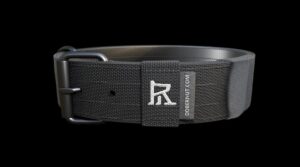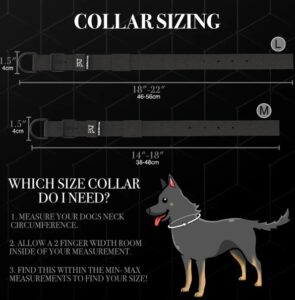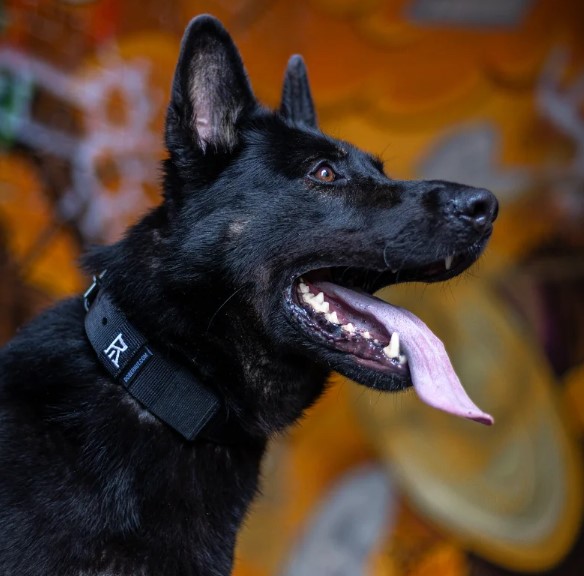Training a dog correctly is a matter of finding a balance between discipline, consistency, and having the right gear. Tactical dog gear has gained huge popularity nowadays because it is pretty tough, extremely versatile, and provides some extra degree of safety.
Initially designed for military and police dogs, trainers, handlers, and even pet owners today are using these gears to advance their dog training session to a whole new level.
In this article, I’ll show you the different types and benefits of tactical dog gear and instructs us on the several key training tips that can bring maximum fun while sharing the sessions with our furry friends.
So let’s start!
Understanding Tactical Dog Gear
Tactical dog gear is designed with specific functional features that make it stand out from standard pet equipment. It is built to withstand rigorous activities and environments, providing the handler with better control and the dog with enhanced protection and comfort. Here are some common types of tactical dog gear:
- Tactical Dog Harnesses: These are sturdy harnesses equipped with MOLLE (Modular Lightweight Load-carrying Equipment) systems, allowing handlers to attach pouches, patches, and other accessories. They often come with handles for better control and a secure fit for high-intensity activities.
- Tactical Dog Vests: Vests provide additional coverage and can include features such as reflective strips, extra padding, and attachment points for carrying gear. They are ideal for dogs in active or outdoor environments, offering comfort and support during training.
- Tactical Leashes: These leashes are designed with durable materials like nylon and feature shock-absorbing capabilities to reduce strain on the handler and the dog. They often come with additional handles for improved control during training.
- Collars and Muzzles: Tactical collars are usually thicker and more robust, providing better control and durability. Muzzles designed for tactical use are breathable and comfortable while offering a secure fit for safety during training.

Benefits of Using Tactical Dog Gear in Training
Investing in tactical gear can significantly enhance your training sessions. Here’s how:
1. Increased Control and Safety
Tactical dog gear, such as harnesses and leashes, provides the handler with better control, which is crucial during training. For instance, a harness with a handle allows you to easily grab and direct your dog in high-stress situations. This control is particularly beneficial when training in crowded or unfamiliar environments.
2. Enhanced Comfort for Your Dog
Comfort is key to successful training. Tactical gear is designed to distribute pressure evenly across the dog’s body, reducing the risk of injury and discomfort. Many harnesses and vests are padded and adjustable, ensuring a snug yet comfortable fit that allows for a full range of motion.
3. Durability and Longevity
Unlike regular dog gear, tactical gear is made from high-quality, heavy-duty materials like 1000D nylon, designed to withstand wear and tear. This durability makes it suitable for rigorous training sessions and outdoor adventures, ensuring your investment lasts longer.
4. Versatility and Functionality
Tactical dog gear often comes with additional features like MOLLE systems, which allow you to customize your setup based on your training needs. You can attach pouches for treats, water bottles, or first aid kits, making it easier to carry essential items during sessions.
Essential Training Tips for Using Tactical Dog Gear
When incorporating tactical gear into your training routine, it’s important to follow certain guidelines to ensure effective and safe use. Here are some key tips:
1. Introduce the Gear Gradually
Dogs may initially feel uncomfortable or anxious when first introduced to new equipment. To help them adjust, start by letting your dog sniff and explore the gear before putting it on. Allow them to wear the harness or vest for short periods indoors, rewarding them with treats and praise to create positive associations.
Tip: Let your dog wear the gear for short, relaxed sessions before attempting more intense training activities. This helps them get accustomed to the feel and weight of the equipment without feeling overwhelmed.
2. Ensure Proper Fit
One of the most crucial aspects of using tactical gear is ensuring it fits your dog properly. A poorly fitted harness or vest can cause discomfort, restrict movement, and even lead to injury. Measure your dog’s chest, neck, and back before purchasing gear to select the right size.
Tip: Regularly check the fit during training sessions, especially if your dog is still growing or gaining muscle. Adjust the straps as needed to maintain a snug yet comfortable fit.
3. Use Positive Reinforcement
Positive reinforcement is key to effective training. When using tactical gear, reward your dog with treats, praise, or playtime whenever they respond correctly to commands or behave well during a session. This approach helps build a strong, positive association with the gear and the training process.
Tip: Keep training sessions short and fun to maintain your dog’s enthusiasm and focus. Long, repetitive sessions can lead to fatigue and disinterest.
4. Train in Various Environments
One of the benefits of tactical gear is its versatility, allowing you to train your dog in different settings. Practice commands and exercises in various environments, such as parks, urban areas, and hiking trails, to build your dog’s confidence and adaptability.
Tip: Gradually increase the level of distractions during training to help your dog learn to focus in different situations. Start with low-distraction environments before progressing to more challenging ones.
5. Incorporate Obstacle Training
Tactical dog gear, especially harnesses with handles, is ideal for obstacle training. Incorporate activities like climbing, jumping, and crawling into your training sessions to build your dog’s strength, agility, and confidence. Obstacle training also enhances your dog’s problem-solving skills and reinforces obedience.
Tip: Always supervise your dog during obstacle training to prevent injuries. Start with simple exercises and gradually increase the difficulty as your dog becomes more comfortable and confident.

Advanced Training Techniques with Tactical Gear
Once your dog is comfortable with basic training using tactical gear, you can incorporate more advanced techniques to further enhance their skills:
1. Scent Work and Tracking
Tactical dog gear, especially vests with MOLLE attachments, can be used to carry scent items during tracking exercises. This training helps build your dog’s scent-detection abilities, which is particularly useful for search and rescue, hunting, and service dog tasks.
Tip: Start with simple scent games using familiar items before progressing to more complex tracking exercises. Reward your dog with treats and praise for successful finds to reinforce their efforts.
2. Protection and Guard Training
For dogs involved in protection work, tactical gear can provide the necessary control and safety. Use harnesses with handles and strong leashes to maintain control during bite training or other protection exercises. Ensure the gear allows for quick release if needed to prevent injury.
Tip: Work with a professional trainer when engaging in protection training to ensure it is done safely and effectively. This type of training requires specific techniques and experience to avoid potential risks.
3. Endurance and Conditioning Training
Tactical vests can be weighted with small pouches to help build your dog’s strength and endurance. This type of conditioning training is great for active and working dogs that require high levels of stamina.
Tip: Start with light weights and gradually increase as your dog’s strength improves. Monitor your dog closely during this type of training to prevent overexertion.
Final Thoughts
Tactic dog gear really improves the performance and safety of your dog when added to your training sessions. This is due to the better control and comfort over the dog. You can then also perform versatile techniques in training.
If the proper tools are chosen and brought in slowly, sticking to good habits, it does really boost those training sessions and really takes your dog to their peak.
Tactical dog gear lets you have fun, play games, while still providing an effective training ground for you and your puppy. If you want to train your dog seriously, for example, or just want to improve a pet’s obedience and agility-just imagine how proper dog equipment and training strategy would change the game. Hooray! Have fun training!
